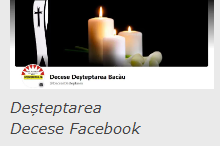Perched on the high ridges of the Carpathian Mountains, amidst the spectacular landscape of Bacău County, lies the Saint Elijah Monastery in Berzunți – a place of prayer and tranquility, with a turbulent history, yet one filled with hope and rebirth. Located on Mount Berzunți, beneath the peak of Bulimandru, where three borders meet, the monastery watches over the valleys of Trotuș and Tazlău. As in the past, access is possible via forest roads that climb from the villages of Comănești – Dărmănești – Plopu, Poduri, Livezi – Berzunți – Saint Elijah, and Târgu Ocna – Larga – Saint Elijah.
From Runcu Mare to Buda – The Beginnings of the Monastic Settlement
The history of the monastery begins around the year 1800, when the villagers from nearby settlements asked Hieromonk Vasile Varnava to establish a monastery on the peak of Runcu Mare. However, the harsh winters and frequent robberies of that time led to the relocation of the monastery in 1828 to the village of Buda, at the foot of the mountain. The wooden church of that period was donated to the village of Prisaca, where it is still preserved today. It is known as the „traveling church” because it was painstakingly lowered from the mountain, carried by oxen-drawn sleds. The monks settled around the church in Buda, forming a community called the Savu Monastery.
The Rebirth of the Monastery in the Heart of the Mountains
After nearly two centuries, in 1990, the residents of Larga, Plopu, and Dofteana wanted to revive the monastery at a site called Poiana Schitului, where a cross still marked the old settlement. With the blessing of the abbot and His Grace Bishop Eftimie, Father Isaia Adragăi, from the Saint Sava Monastery, was sent to oversee this heartfelt project. Initially, a simple wooden house was built, with two rooms: one for the monks and another for the workers who would help with the construction of the new monastery. Water was brought in buckets from a spring an hour away until a well was dug, which became essential for life on the mountain.
The Blessing of the Chapel and the Beginning of the Main Church Construction
In 2001, the chapel (a smaller church) and the buildings with cells were consecrated by His Grace Bishop Vicar Ioachim Băcăuanul. A year later, the same bishop consecrated the site for the construction of the main church. The construction of the church began in 2002 and continued until 2010, marked by hardships: bitter winters, lack of electricity, and inaccessible roads. Materials were transported with great effort, sometimes on foot or with the help of animals.
A New Beginning, A Flourishing Community
In 2010, the beautifully decorated and painted church was consecrated by His Grace Ioachim, and Father Isaia Adragăi was raised to the rank of protosinghel. The complex then began to expand: new buildings were erected, and the original house was transformed into a place to receive pilgrims. The monastery was fenced with a wooden gate, and in 2012, the bell tower was consecrated, at the base of which stands a Cross dedicated to Saint Seraphim of Sarov.
Today’s Monks and the Legacy of the Past
In 2013, the construction of the abbey house began, and between 2017-2018, a summer altar made of wood was built and consecrated by His Eminence Archbishop Ioachim. A historic moment occurred then: after two hundred years, two brothers were tonsured as monks and later ordained as hieromonks. In 2018, renovation work on the chapel began, and it was consecrated in 2019. The chapel now has the shape of a ship, with a vaulted roof, a small tower, Byzantine frescoes, and the patronage of Saint John the Baptist and Saint John Iacob of Hozeva.
Today, A Soulful Place in the Heart of the Carpathians
Today, the Saint Elijah Monastery in Berzunți is a prominent monastic settlement, encompassing the main Church, dedicated to Saint Elijah the Prophet, the Chapel, the Summer Altar, the Bell Tower, the monks’ cells, the Abbey House, a barn, an animal shed, a garden, and an orchard. Its entire existence is a living testimony to the faith, patience, and love for God of those who contributed to the rebirth of this holy place.
„Let us carry our cross together with Christ!”
Let us carry our cross together with Christ! Christ carried a heavy cross. Upon this cross were borne all our sins, those of all people, from all times. And we carry only our own cross, the cross of our own sins, and those are redeemed through Jesus Christ, the Lord.



















